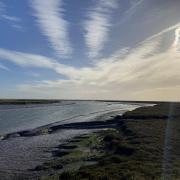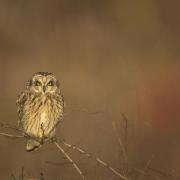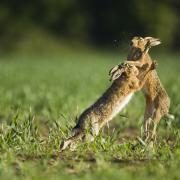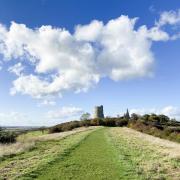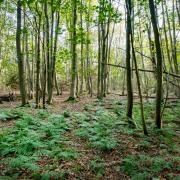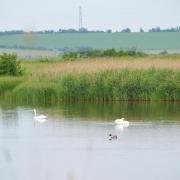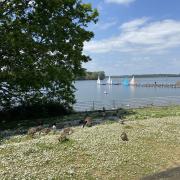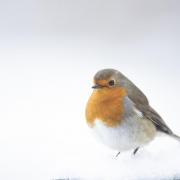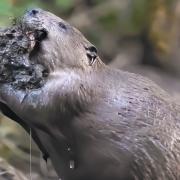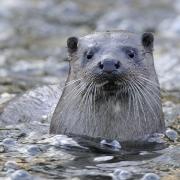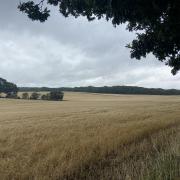Andrew Fallan shares his expertise in Essex wildlife with us, sharing his views on the conservation and enivornmental issues that we face in the county and across the country
At this time of year, we are often encouraged to help our feathered friends in our gardens by leaving out some suitable food and water. But it should be noted that the birds visiting our gardens, perhaps to eat the food we provide for them, may in turn attract the keen-eyed attentions of a hungry sparrowhawk. Although the lightening-bolt strike of these awesome predators makes for quite a spectacle, for most of us the thought of small, defenceless birds meeting their end in the pincer-grip of murderous talons is quite unpleasant, upsetting even, which reveals a rather uncomfortable truth about nature. Although there is care and co-operation, even kindness, within its nurturing embrace, the natural world is nevertheless filled to overflowing with ruthless competition, savage violence and pitiless cruelty. In fact, I would go as far as to say that in many respects I find nature quite abhorrent.
However, all of this points to what is perhaps the most important idea in the history of human endeavour, which is not only as beautifully simple as it is devastatingly incisive, but which explains, at a stroke, the wonderful diversity, the mind-boggling complexity and the dog-eat-dog brutality that we see in nature all around us. Quite simply, it is the very key to understanding all of this. I am referring, of course, to Charles Darwin’s theory of evolution by natural selection.
In any given species, each individual will vary to some extent, just as people do. In the intense pressure cooker that is the natural world, even the smallest variation – such as faster limbs or keener senses – can make all the difference, meaning only the very fittest and best-equipped individuals will live to breed. Consequently, those characteristics that aid survival will be passed on to the next generation, with each new generation being an improvement upon the last. Over time, animals therefore become evermore specialised and better adapted to their environment – predators better at catching their prey and prey animals better at escaping – such that the gradual, incremental changes wrought upon their bodies eventually give rise to new species, even to entirely new groups of organisms.
My interest in evolution was first roused by BBC Springwatch presenter Chris Packham, when I attended one of his talks at the Queen’s Theatre in Hornchurch. Although this naturalist par excellence is as knowledgeable as he is passionate, what really sticks in my mind isn’t so much the information he imparted, but a seed of understanding that was sown – namely, that everything in nature exists for a reason. This might seem obvious, but to use an example that I think Chris himself discussed, I had never wondered why seabirds such as puffins and shearwaters often have light-coloured undersides with noticeably darker plumage above. I’m certainly not claiming to have any kind of definitive explanation for this, but when viewed from the perspective of the fish that they feed on, it’s not difficult to see how light undersides would render a floating seabird less visible against the background of the sky above. Similarly, when eyed by a predatory great black-backed gull from above, these same birds would be less obvious when riding the murky waves.
Even without any specialist knowledge, once you understand how natural selection works, its immutable hand suddenly becomes apparent in the wildlife all around us, including here in Essex. For example, with their acute vision, hooked bills and fearsome talons, sparrowhawks are clearly one of nature’s killers – their short, broad wings also aiding pursuit of woodland birds at breakneck speed through narrow gaps in the trees.
Conversely, the brown hare has all the hallmarks of a prey animal. Eyes located on the side of the head help them spot predators approaching from all angles, even from behind, while their famously oversized ears are alert to the tiniest sound – yet if all else fails, their long, slender limbs enable them to flee at speeds of up to 45mph. Even at the local duck pond, a particular kind of natural selection, known as sexual selection, explains the resplendent, almost garish hues of male mallards, with countless generations of females – which are duller so as not to be seen on the nest – choosing the most colourful individuals to mate with.
Darwin’s groundbreaking theory utterly transformed our understanding of the natural world. But for me, the greatest thing of all is that, with the advent of modern genetics, we know that us humans are related, at a very deep level, to every other living thing on earth. This means that we are not separate from nature, but very much a part of it. It is certainly something that we would do well to remember.






